Pickled Vegetables
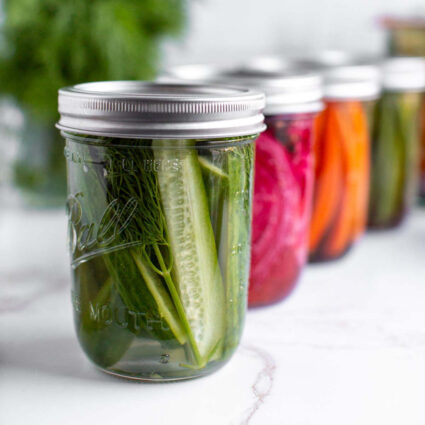
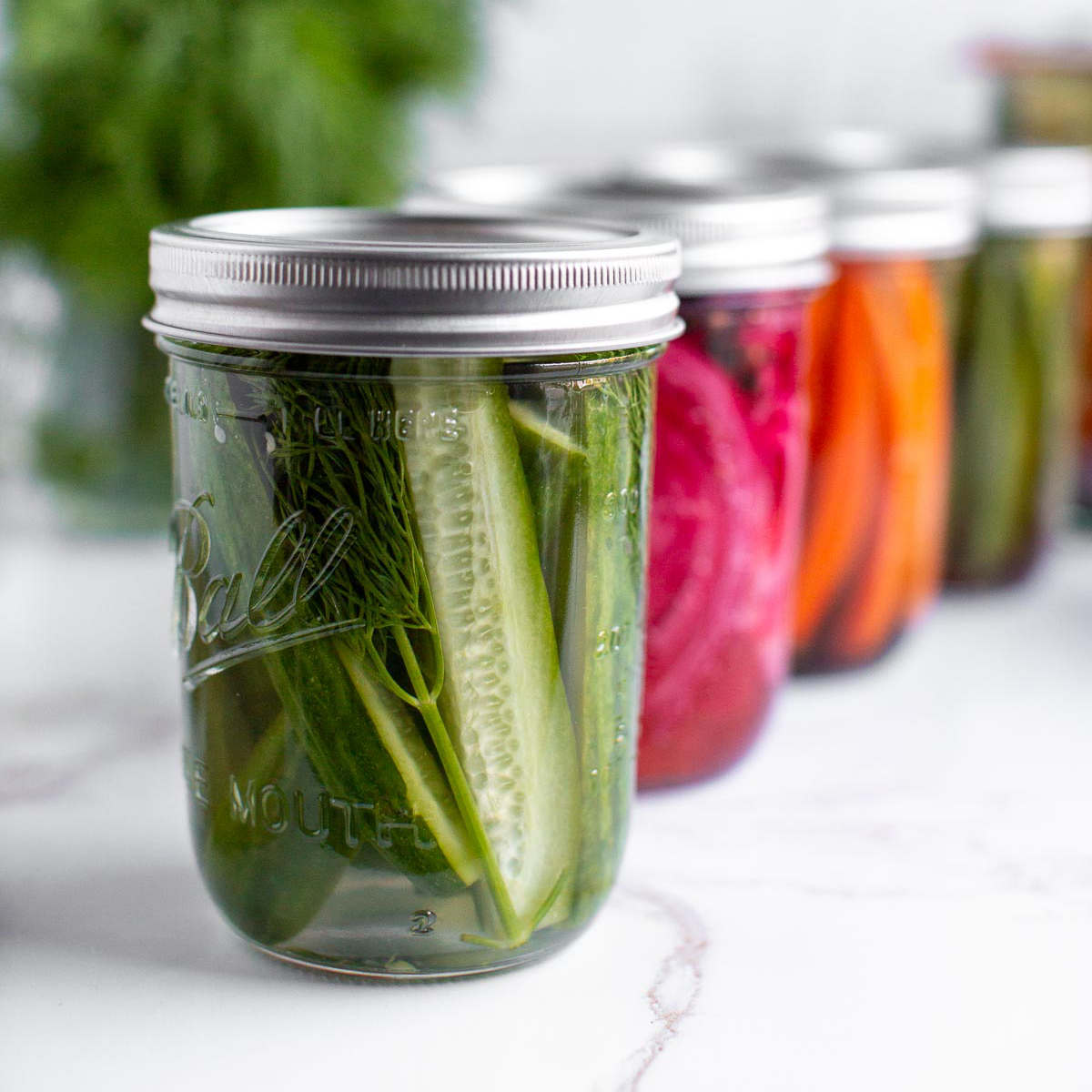
Get ready to pickle like a pro with our super handy guide on making quick pickled vegetables. We’ll walk you through each step, from deciding which fresh veggies to choose to crafting the perfect brine for that mouthwatering tang.
These easy instructions and tips will have you enjoying crunchy, flavorful pickled creations in no time at all. Transform your hum-drum veggies into tasty delights with this simple and satisfying pickling process. You’ll be so hooked that you’ll be making at least one batch a week…or more!
If you love the tangy, vinegary taste of pickled vegetables, make sure not to miss out on this homemade pink pickled red onion recipe. Or, if you’re feeling brave, branch out and try something a little more exotic like these Japanese Pickled Cucumbers.
Are you prepared to start pickling? Let’s get started!
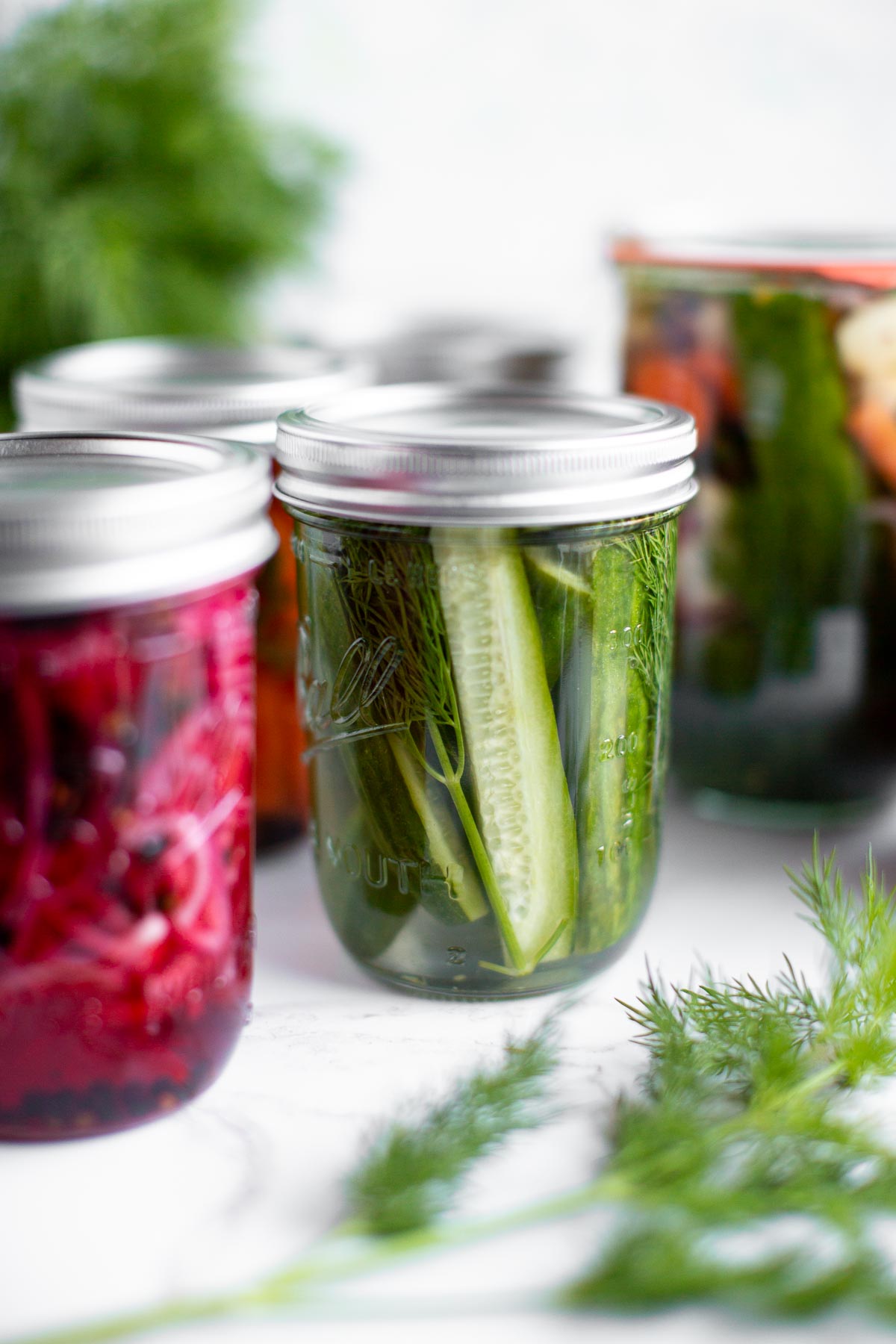
Table of Contents
Why Pickled Veggies Are Awesome
Eager to make the perfect pickles? From the crisp veggies to the magical brine, what’s not to love about this cool, tasty condiment? Here are just a few reasons why you’ll love this recipe:
- Only 5 Simple Ingredients: Vinegar, water, veggies, salt, and sugar—is that all? You’re sure to have these staples in the kitchen pantry or fridge for sure!
- Quick and Easy: In less than ten minutes, you’ll have veggies soaking in salty goodness that will be ready to munch on the next day!
- Delicious on (Pretty Much) Anything: Pickled veggies perk up any dish and are a handy, healthy snack when the urge for salty snacks hits.
- Perfect for Food Prep: If made ahead of time, these clear jars of colorful veggies can not only brighten up your fridge, but also help you to vary the flavors of your favorite foods.
- Helps to Reduce Food Waste: When you have no idea what to do with those leftover stalks of celery or carrots sticks, this is the answer. Skip the compost and make yourself food for the future!
What are the Best Vegetables to Pickle?
The fun part of making your own brined vegetables is choosing which ones to add! Go the classic route by using the tried and true veggies such as cucumbers, carrots, and onions. Or, be brave and bold and pick more uncommon choices like asparagus, squash, or daikon. The choices are totally up to you and your taste buds.
Top 10 Vegetables to Pickle:
- Cucumbers
- Onions
- Cabbage
- Carrots
- Green Beans
- Peppers
- Cauliflower
- Asparagus
- Beets
- Radishes
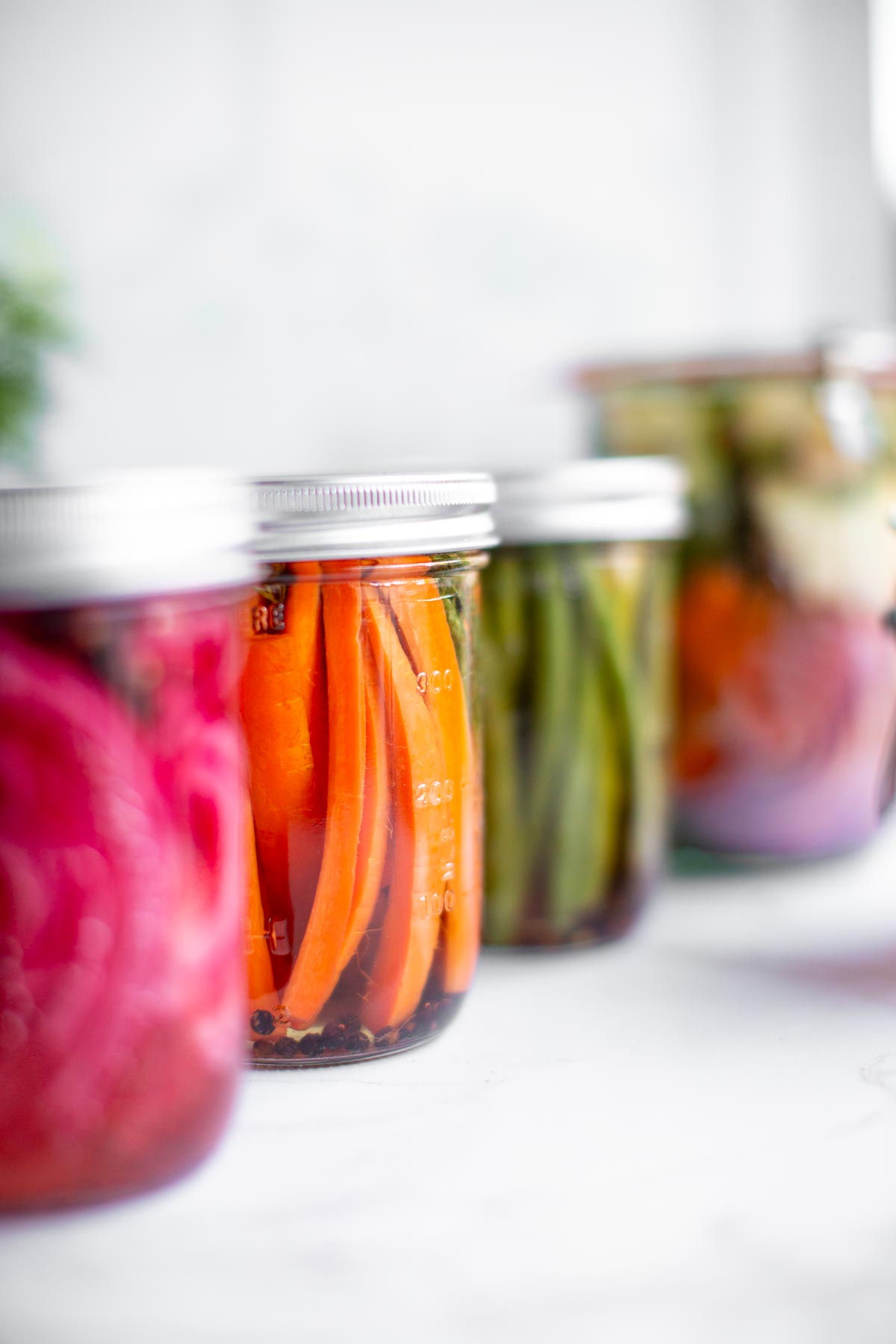
Ingredients and Substitutions for Quick Pickled Vegetables
Perfect your pickling skills with these ingredient and swap suggestions. Learn what you need and how to switch things up for tasty pickled veggies just the way you like! Leave your favorite pickling tips in the comments below!
Vinegar: White distilled vinegar is our go-to for brining because its clear color won’t mess with the vibrant hues of your veggies and its sharp acidity adds the perfect zing to the brine. It creates that tangy and tasty pickled goodness that is perfection for the palette.
Salt: Kosher salt takes the crown for brining fun because it dissolves like magic, skips the funky additives, and its chunky style makes measuring a breeze—ensuring your pickled goodies are swimming in the best brine party ever!
Sugar: This is the sweet secret in brining. Sugar balances out the tanginess by adding a hint of sweetness to the mix. It also creates a well-rounded flavor profile for your finished pickles.
Vegetables: Pick one or multiple from the list above! Or spice up your pickling game with a pepper party! From jalapeños to bell peppers, experiment with a colorful array of peppers, turning your pickled veggies into a fiesta of flavors! Don’t forget to try banana peppers, sweet cherry, and Hungarian wax peppers, too.
How To Make Pickled Vegetables
Making pickled vegetables from scratch is a kitchen skill you’ll want to have. Not only is it quick and easy, but so much fun. If you’ve got kids at home, make sure to get them involved. You can make this a lovely weekly (or annual) tradition, especially if you use vegetables from your own garden.
Step 1: Select your favorite fresh vegetables – cucumbers, carrots, cauliflower, or a mix for a colorful medley.
Step 2: Choose Your Shape! You don’t have to stick to conventional shapes for pickling. While spears and sticks are traditional, you can always cut your veggies into cubes, circles, or other fun shapes. How about using cookie cutters to make adorable or snazzy pickle pieces?
Step 3: Measure out and add the vinegar, water, kosher salt, and sugar into a large saucepan and bring to a boil. Let it cool slightly while you arrange the veggies into the wide-mouthed mason jars.
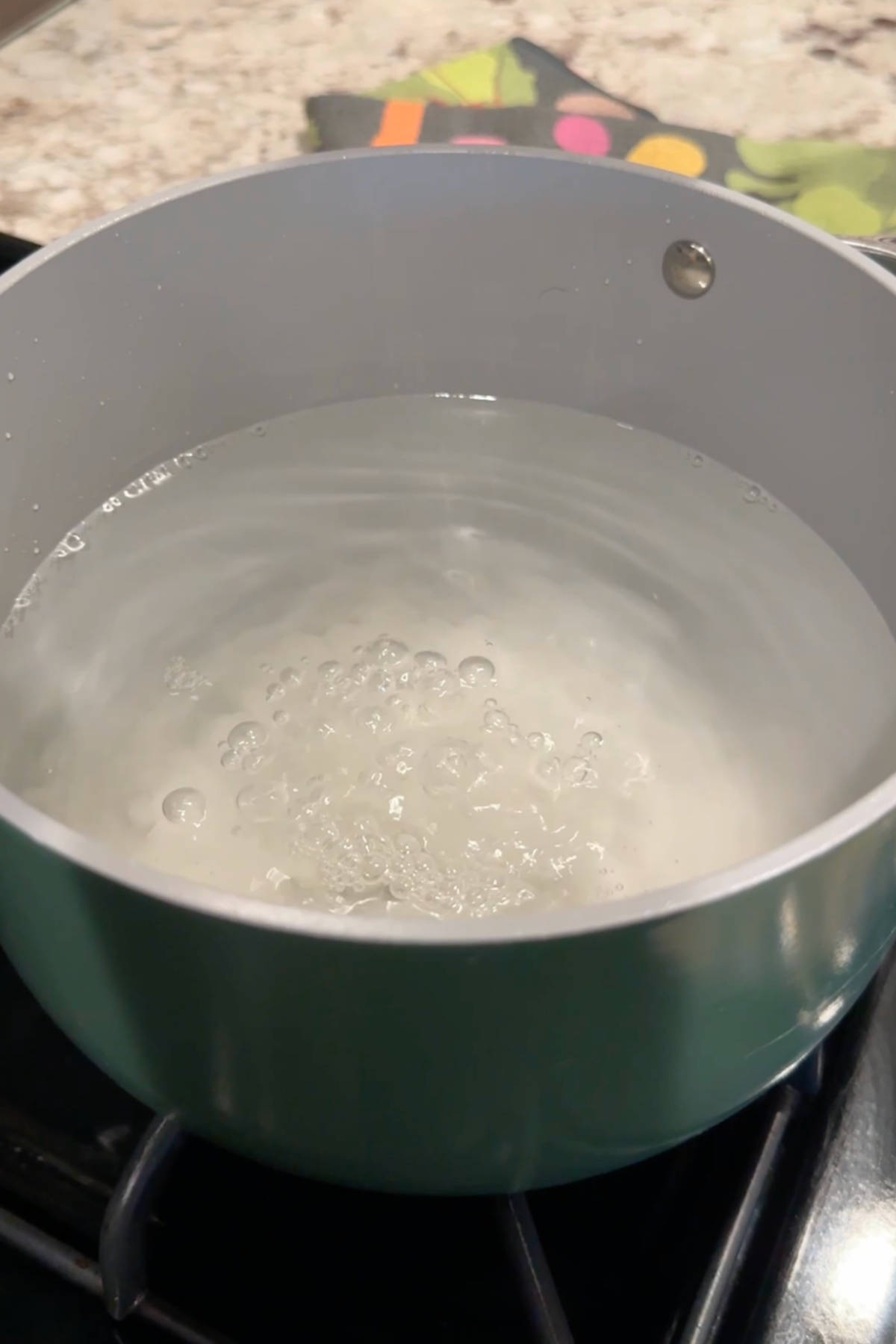
Step 4: Add some spices like garlic, dill, or peppercorns for extra flavor. Whatever you like. Pour the brine carefully over everything in the jar until full. Add the lid and refrigerate overnight or for a few days.
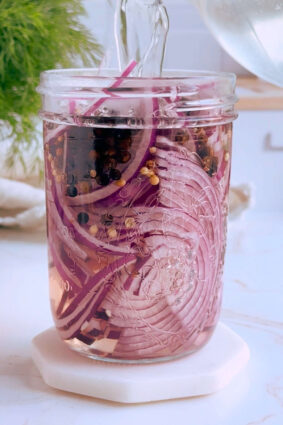
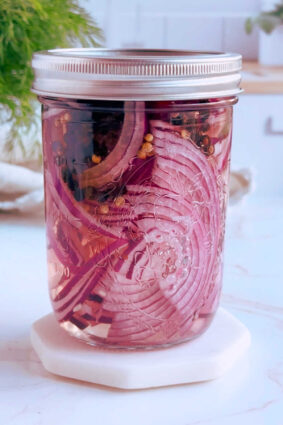
Once you let time work its magic, your homemade pickled vegetables will be ready to add a burst of flavor to salads, sandwiches, or enjoyed straight from the jar.
Serving Tips and Suggestions
There are so many fun ways of enjoying pickled vegetables! You can easily turn these tangy delights into stars of your meals if you choose the right ones to accent. Here are our favorite ways of adding brined vegetables to everyday recipes:
- Snack Attack: Enjoy pickled veggies as a crunchy and tangy snack straight from the jar.
- Savory Sidekick: Serve pickled vegetables as a zesty side dish to complement main courses, adding a serious burst of flavor to your meal.
- Top That Salad: Bump your salad up a notch by tossing in pickled veggies for an extra kick and a delightful contrast of textures. We love adding a few finely chopped chunks to a creamy potato salad!
- Sandwich Upgrade: Amp up your sandwiches and wraps by layering them with pickled vegetables, enhancing both taste and crunch. How about adding a few to this Artichoke “Tuna” Salad Sandwich or Avocado Cucumber Sandwich for a bit of zing?
- Charcuterie Charm: Showcase pickled veggies on a charcuterie board to add color, acidity, and a refreshing element to your spread.
- Easy Appetizer: Serve a sprinkle of pickled veggies on top of crackers with vegan cream cheese. Any cracker will do but these homemade almond flour crackers would be perfect!
Pickled Vegetable Recipe FAQs
Vegetables that are pickled can stay fresh for a few months to a year if you keep them in the fridge. How long they last depends on the veggie, how you pickle them, and where you store them. Vegetables with a higher water content tend to go “bad” more quickly.
Pickled vegetables are best when enjoyed fresh from the jar. It’s not a good idea to freeze pickled veggies because it can change how they taste and feel.
Pickled veggies still have some nutrients, but they might not be as healthy as fresh ones because pickling involves adding lots of salt and sometimes sugar. Fresh veggies tend to keep more of their good stuff.
A brine is a mixture of salt and water used in pickling to preserve and flavor vegetables. When veggies are soaked in this salty solution, the brine creates an environment that inhibits the growth of harmful bacteria. Not only that, but it encourages the growth of beneficial bacteria. Pickling brine also gives the vegetables their pickled taste and extends their shelf life.
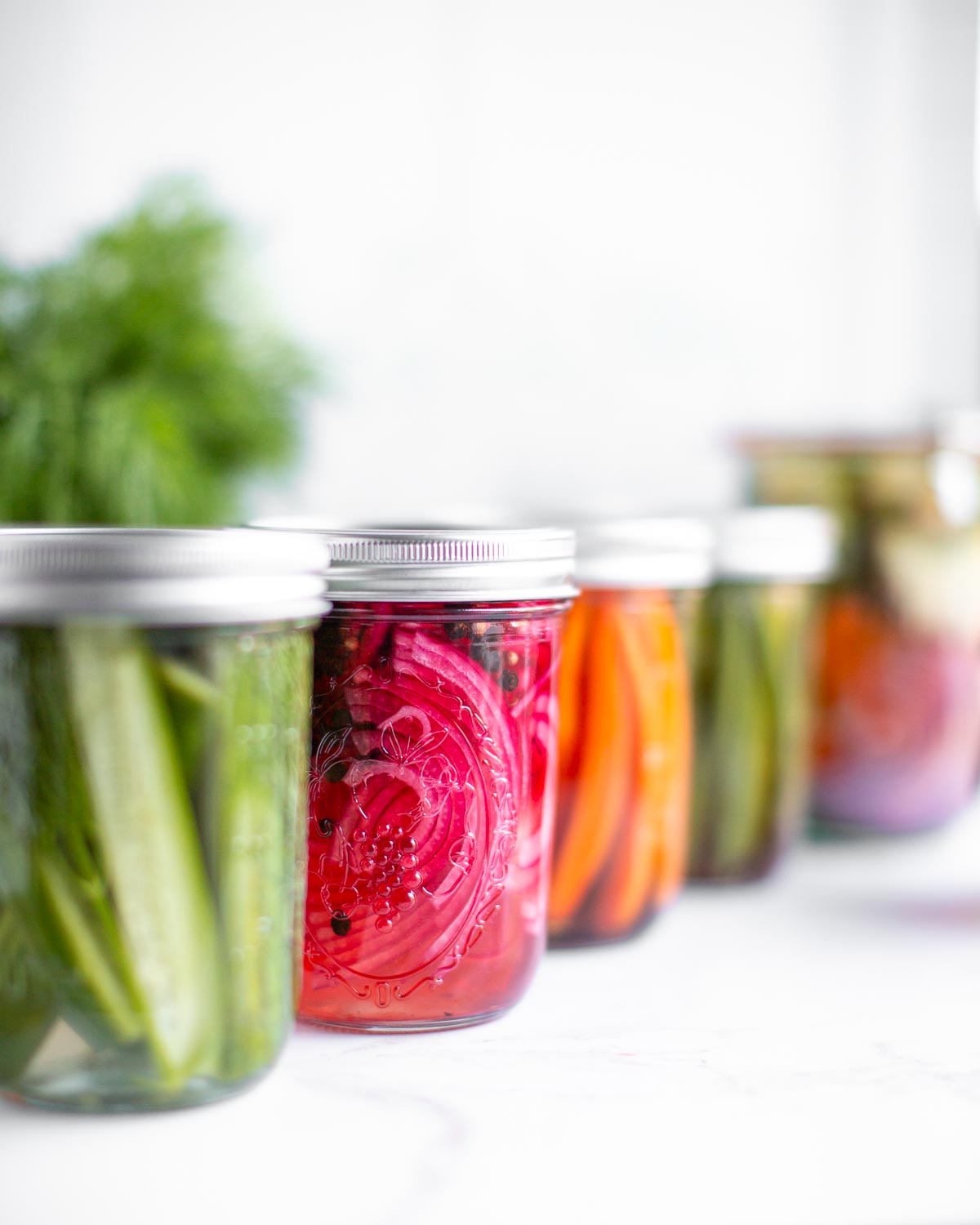
Time to jump into the age-old art of pickling! You’ll love turning everyday veggies into tangy bursts of flavor and add a new yummy element to old recipes. You’ll impress not only yourself, but also your friends and family with your homemade pickled wonders.
Pickled Vegetables

Equipment
Ingredients
Brine:
- 2 cups white vinegar
- 2 cups water
- ¼ cup sugar
- 2 tablespoons kosher salt
Pickled Veggie Options:
- Carrots, sliced into sticks
- Cucumbers, sliced into spears
- Green Beans, trimmed to fit your jar
- Red Onions, thinly sliced
- Cauliflower, cut into small florets
- Chickpeas, rinsed and drained
Spices and Mix-Ins:
- Peppercorns, pink or black
- Coriander Seeds
- Fresh Dill
- Garlic Cloves
- Peppers , Jalapeno, Habanero, etc.
- Red Pepper Flakes
- Beet Chunks , for pink color
Instructions
- In a medium saucepan add the vinegar, water, salt, and sugar, mix, and bring to a boil. Once salt has dissolved, remove from heat while you assemble your jars.
- Fill wide-mouth mason jars with your choice of vegetables to pickle.
- Add any desired spices and mix-ins.
- Pour the hot liquid over the veggies until each jar is full. Close the jars and store in the fridge.
Notes
- Feel free to mix a few of each type of veggie into one mason jar or, if you’d prefer, make each mason jar a different veggie.
- The longer you let the veggies sit in the brine, the better they’ll taste. They can be eaten right away, but at least give them 3 days to marinate for maximum flavor.
- You can use any type of mason jar, but the wide mouthed version gives you the most space for adding vegetables.






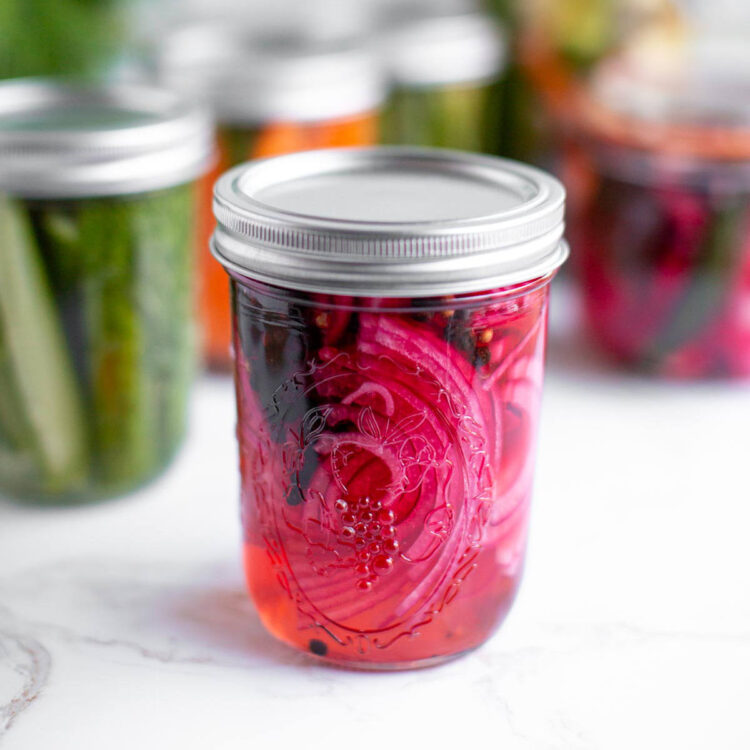
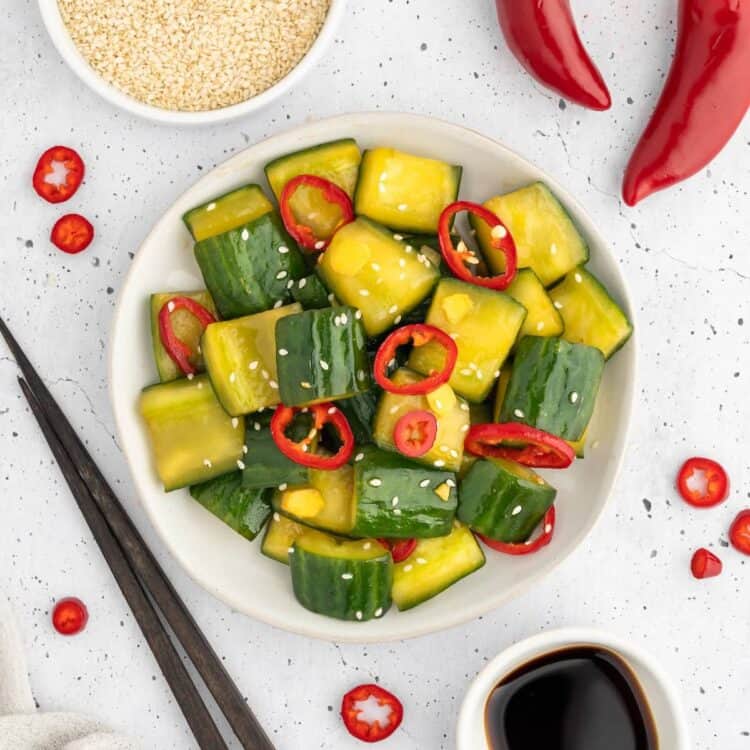
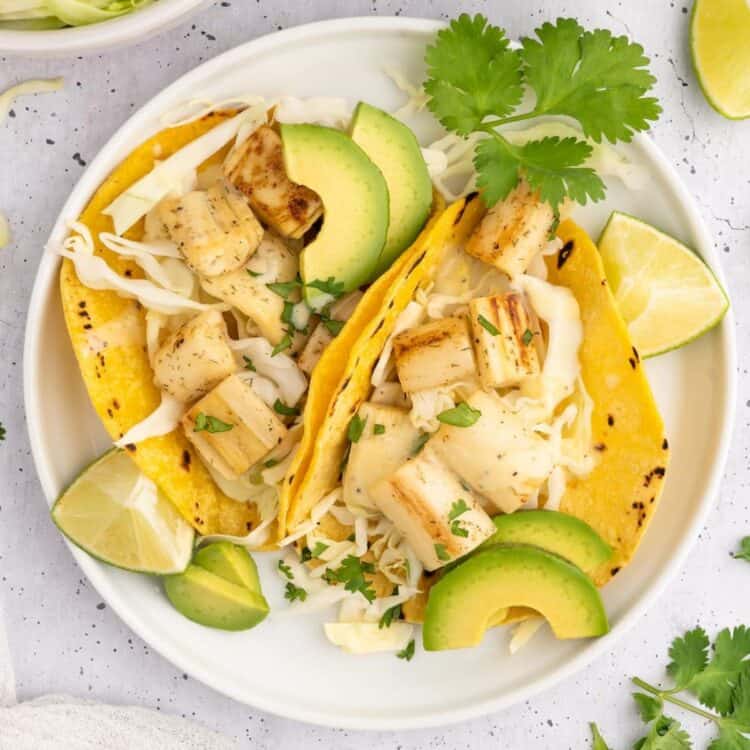
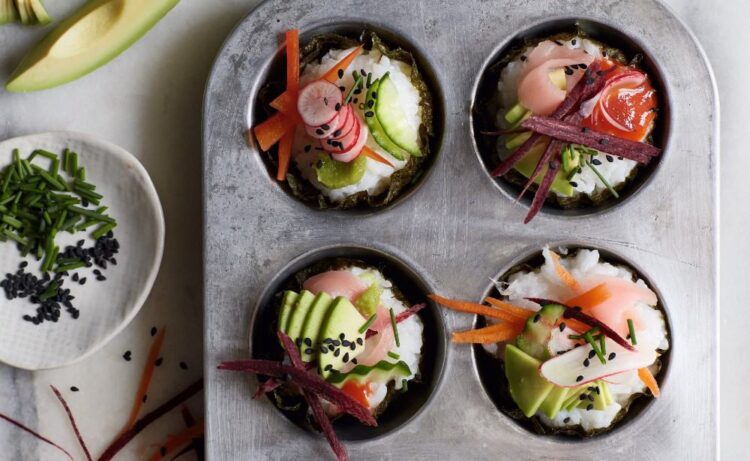
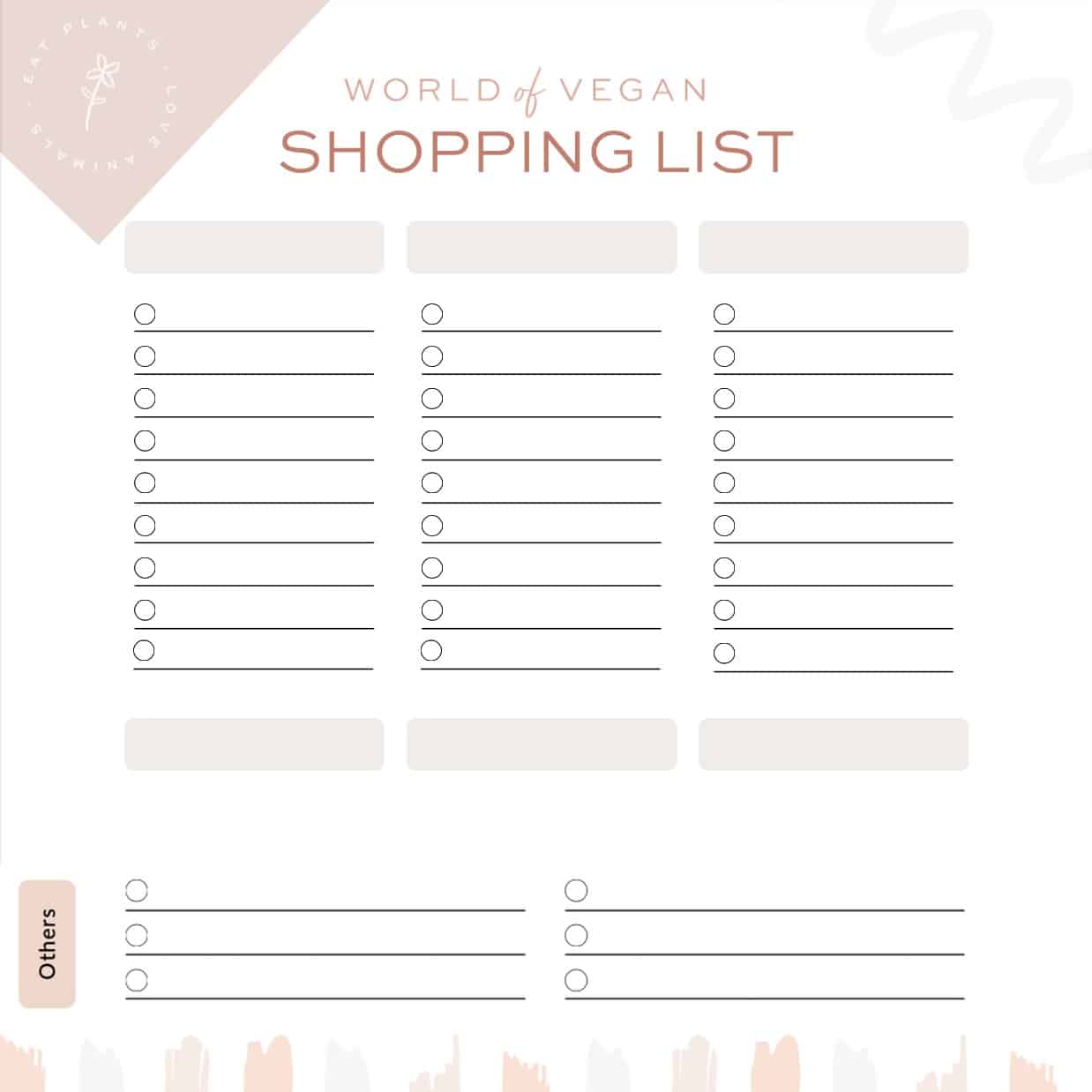
Leave a Comment
Thanks for this so helpful
Love this recipe so much! Pickled veggies are super fun to make and perfect on top of sandwiches or salad 😀
Can’t wait to pickle with this recipe!
This is such a great guide! Can’t wait to try this out!
I gotta get my pickling game together! Great recipe!
I can’t believe it took me this long to start pickling veggies! This recipe is perfect.
I had no idea how easy it is to pickle your own veggies. Makes me feel like a total homesteading pro!